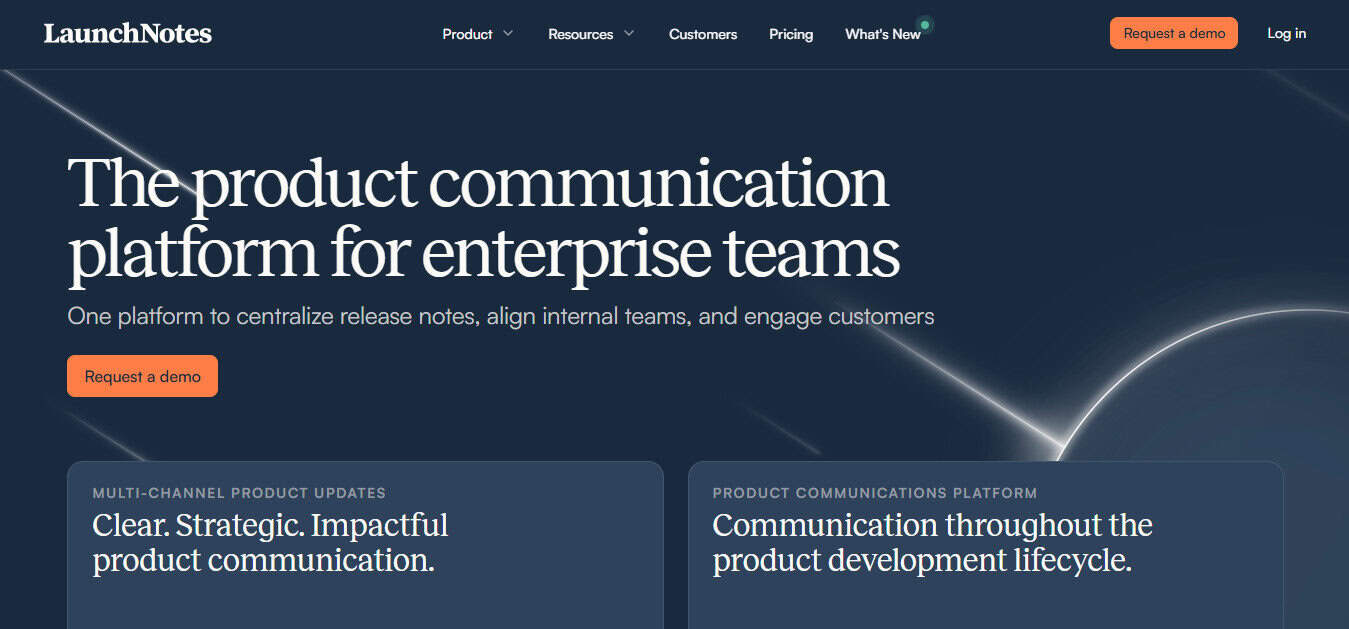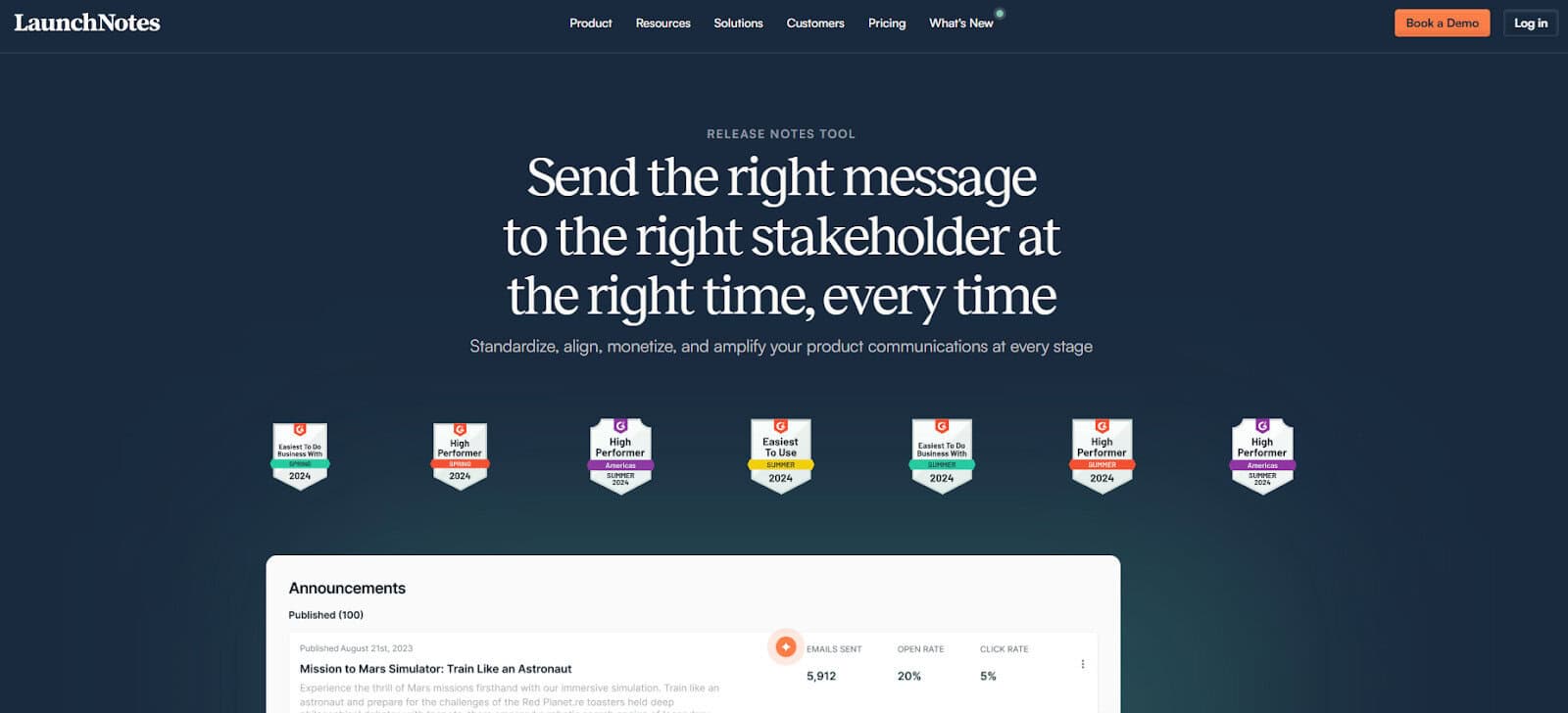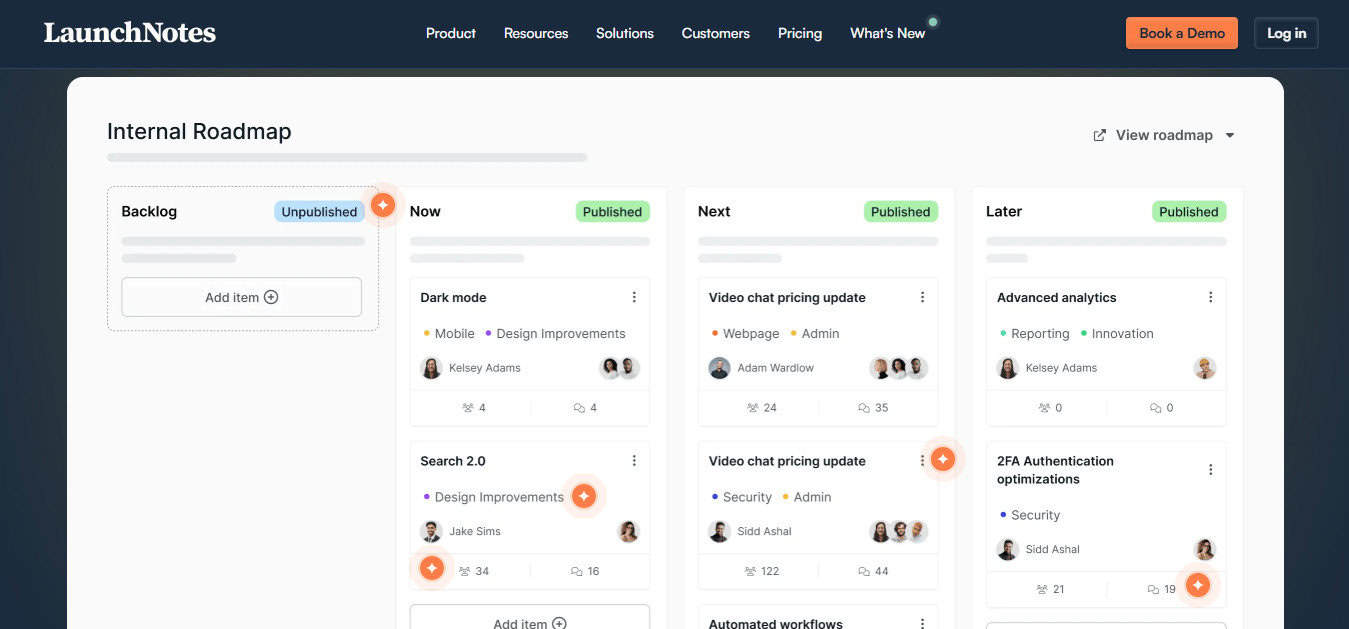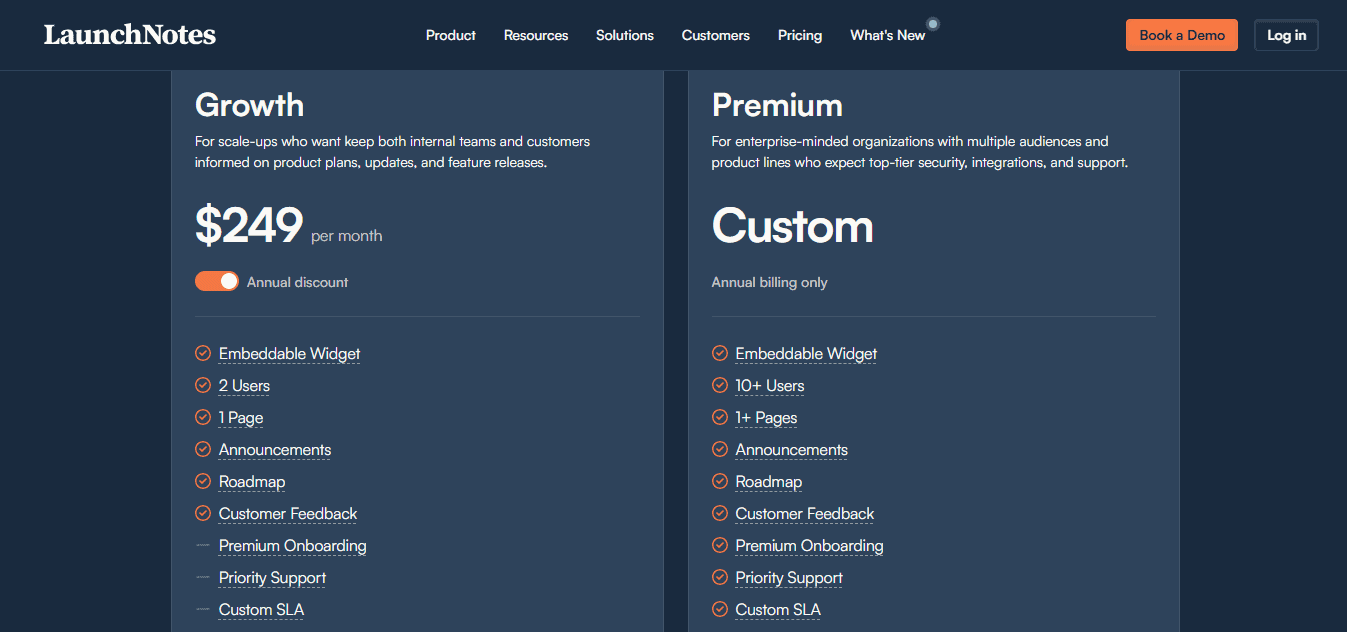- TL;DR:
- Here are Some Core Features I Look for in a Great Release Notes Tool:
- My Top Release Notes Software Picks:
- Frill - Best for Customer Feedback-Driven Feature Updates
- ReleaseNotes.io - Best Platform for Straightforward, Simple, and Sleek Release Notes
- Changelogfy - Best Feature-Rich Release Notes Tool
- LaunchNotes - Best for Customer-Facing Release Notes
- Olvy - Best Free Lightweight Option for Release Notes
- My Final Recommendations
Last Updated on October 3, 2025 by Ewen Finser
Release notes are an integral part of communicating changes and updates to products. Businesses should use release notes software to enable important information to be communicated quickly, accurately, and professionally across a range of platforms.
Customers, users, and even internal teams should be aware of critical changes, bug fixes, or enhancements as they happen, as this improves both user experience and trust.
A great tool should enable teams to send updates quickly, efficiently, and without manual intervention to help avoid the risk of errors creeping up.
For communications to be received successfully, it’s vital to target users where they are most likely to see them, including email, popups, and widgets, for example.
With this in mind, these are my top recommendations for release notes software that I’d recommend looking into.
TL;DR:
When choosing a release notes tool, think about your specific organization’s needs, audience, product service offering, company size, and technical capabilities before making a decision based on costing alone.
- Frill – Best for customer feedback-driven feature updates
- ReleaseNotes.io – Best platform for straightforward, simple, and sleek release notes
- Changelogfy – Best feature-rich release notes tool
- LaunchNotes – Best for customer-facing release notes
- Olvy – Best free lightweight option for release notes
LaunchNotes takes the busywork out of product updates. Paste in your notes or tickets and get a structured announcement draft instantly. It’s designed for teams that want to save time, segment updates, and keep communication consistent across every channel.
Here are Some Core Features I Look for in a Great Release Notes Tool:
- Ease of use – A clean, simple user interface and short learning curve are always preferable. Training and upskilling your team members who’ll be utilizing the software should be quick and straightforward. I also lean more towards platforms with an established knowledge base.
- Markdown features – Markdown editors help you edit your communications in a way that allows consistency across different channels.
- Audience segmentation – Whether communicating to internal or external stakeholders, or a specific set of users, your tool should allow a way to split your audience easily.
- Integrations – Rather opt for tools that integrate into several existing platforms you may already use. This includes both communications channels and those that your technical team uses for product development.
- Technical support availability – Release notes software can be complex, so it’s best to choose an option that has easily accessible support channels
- Labels and categories – A release notes tool should allow you to tag, label, or customize categories to help users and teams easily identify which updates apply to what part of your software or type of update.
- Notification formats – I prefer tools that let you choose how you want to communicate updates, including banners, emails, widgets, popups, or a combination of the above.
My Top Release Notes Software Picks:
Here are my top choices when it comes to release notes software and what their core strengths are. Businesses or teams deciding between which tool is best for them should consider what key features and use cases are the most applicable for them before settling on which is the best release notes software
Frill – Best for Customer Feedback-Driven Feature Updates
I found Frill a straightforward and lightweight option for small to medium-sized businesses that need to focus on delivering customer-driven updates in an easy, brand-centric way. Although it’s less customizable than other tools, it has a great range of functionalities, including embeddable widgets, feedback, changelogs, and NPS features.
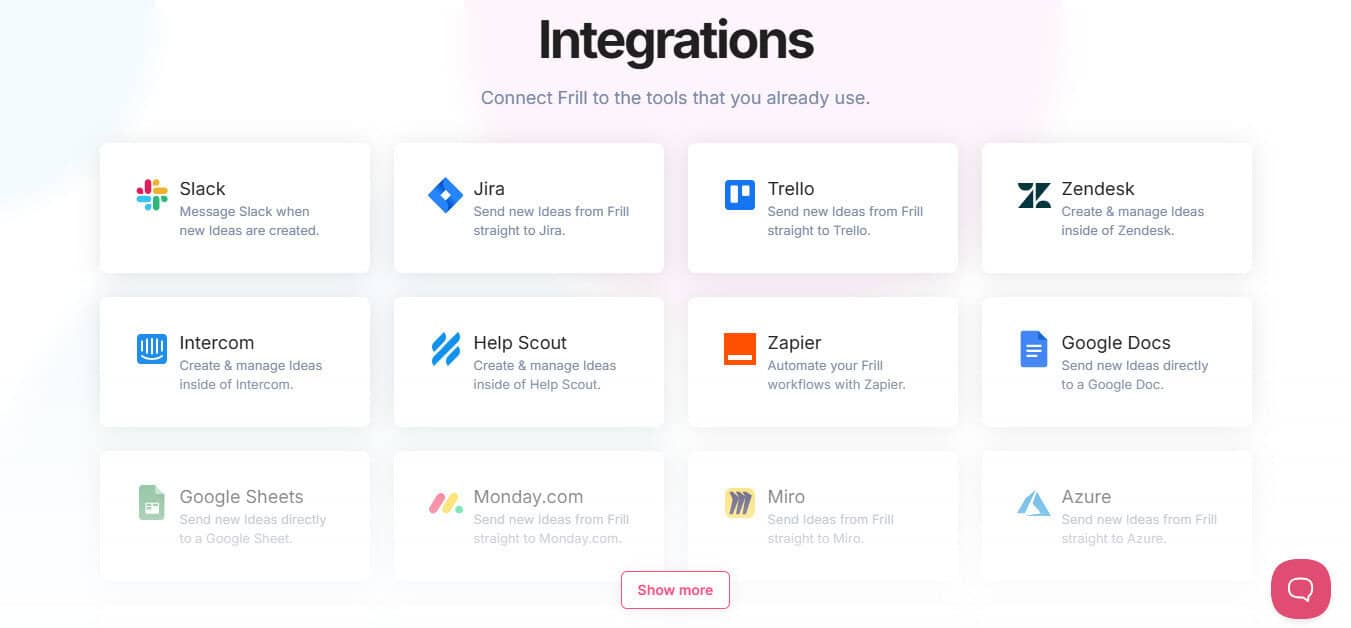
Top Features on Frill:
- Unlimited announcements (and users) on all plans – I love that you’re not limited on core features at a plan level, making this an excellent option for companies that need to handle large numbers of updates.
- Idea, feedback, announcement, and roadmap management combined in one tool
- Surveys, NPS, and polls are available features within the platform. These are limited on lower tiers but unlimited on higher tiers.
- Integrations with Slack, Jira, Zapier, Intercom, Zendesk, Trello, and many more.
- You can downgrade or upgrade plans at any time, making it an ideal option for smaller businesses that have needs that may scale.
Dislikes and Downsides
- Direct chat support is not available, and email support can take time. This is not ideal for users who may require urgent assistance.
- You may have to pay for add-ons for specific features such as surveys, whitelabeling, and privacy, which can become costly.
- Less customizable and simpler reporting/analytics capabilities compared to other tools.
- Lacks some bulk editing or bulk actions, and actions such as idea management will need to be managed one by one.
Pricing:
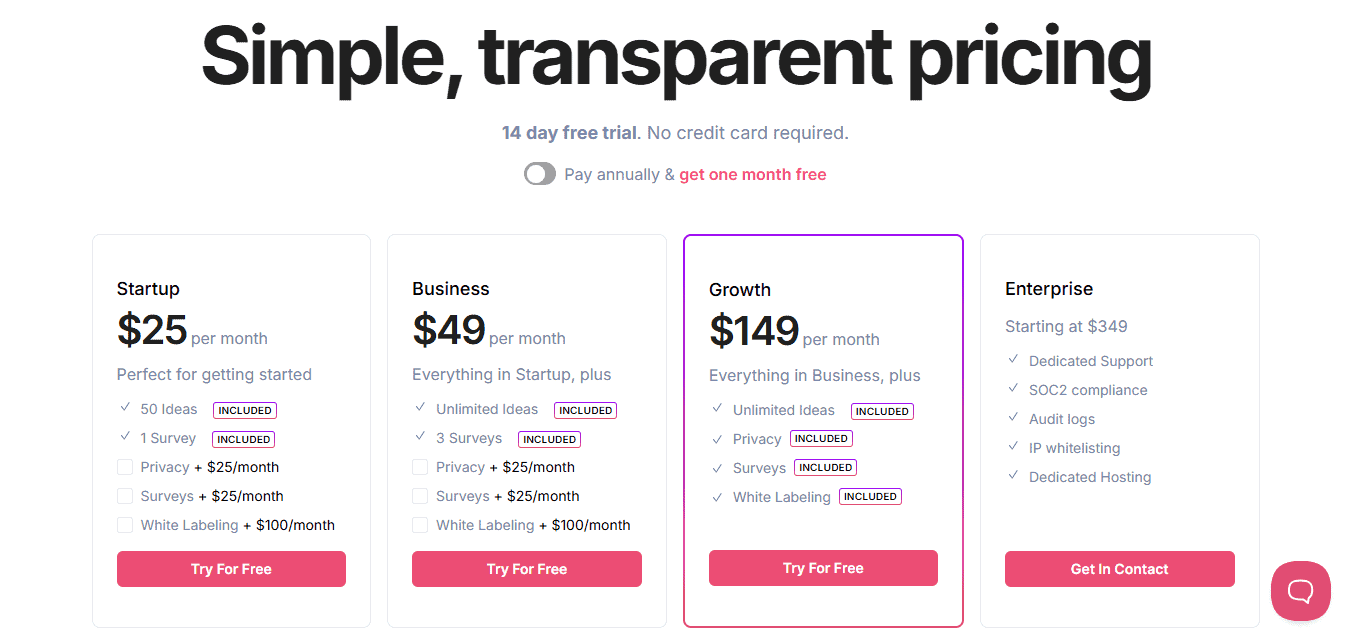
- Free 15-day trial available
- Standard pricing plans range from $25 per month to $149 per month on average, without paid-for add-ons.
- Enterprise plans have custom pricing options available via request.
- Discounts offered for annual commitments.
ReleaseNotes.io – Best Platform for Straightforward, Simple, and Sleek Release Notes
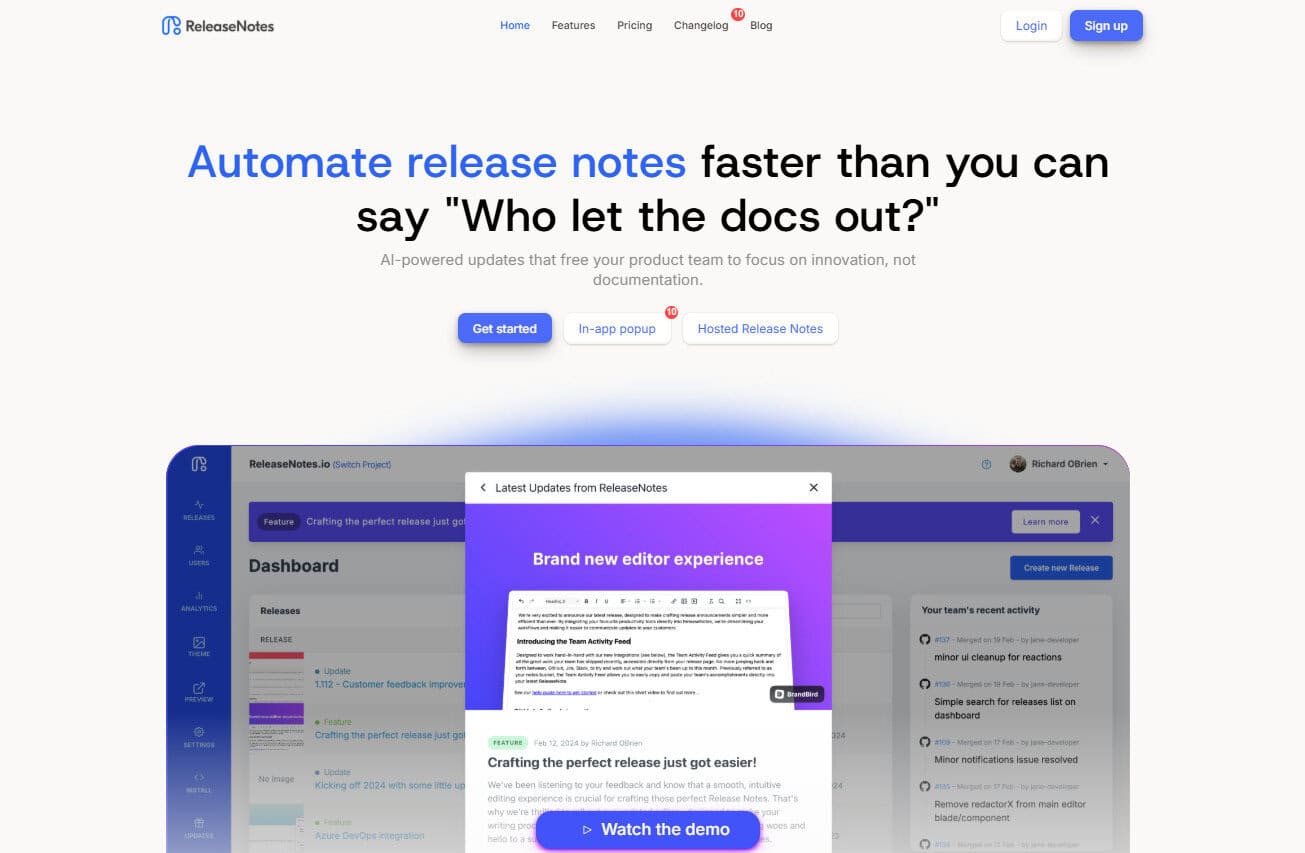
Top Features on ReleaseNotes.io
- User-friendly interface – ReleaseNotes.io is super straightforward. It takes a few seconds to create an announcement, add tags, and publish.
- User reactions – You can easily enable user reactions to your release notes with a simple toggle on/off.
- It’s easy to split internal vs external release notes, making user segmentation convenient.
- AI feature called “smart releases” to help you create release notes using AI (however, you’ll have to set up an integration before you can use this feature)
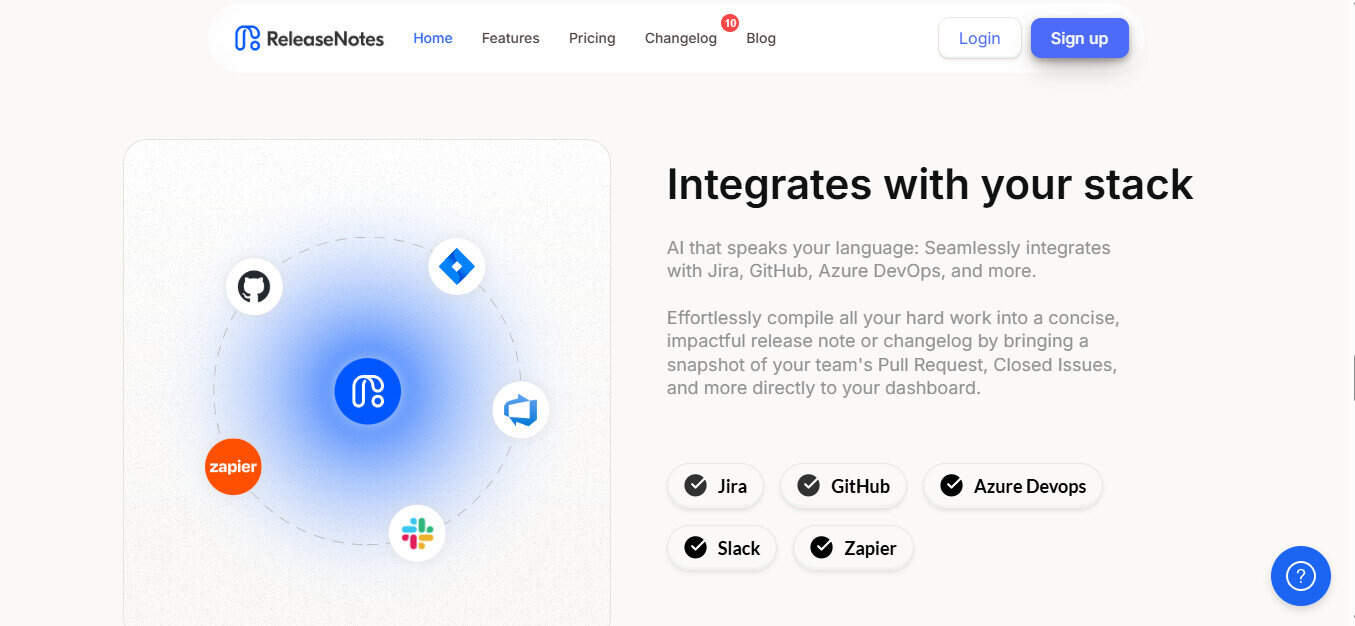
Dislikes and Downsides
- The platform is a bit laggy, and page loads can take some time. I’d love to see a loading icon on the site to avoid a poor user experience.
- No pre-set templates for release notes announcements
- Not as intuitive as other platforms and lacks guidance/guided onboarding to help you find key advertised features.
Pricing:
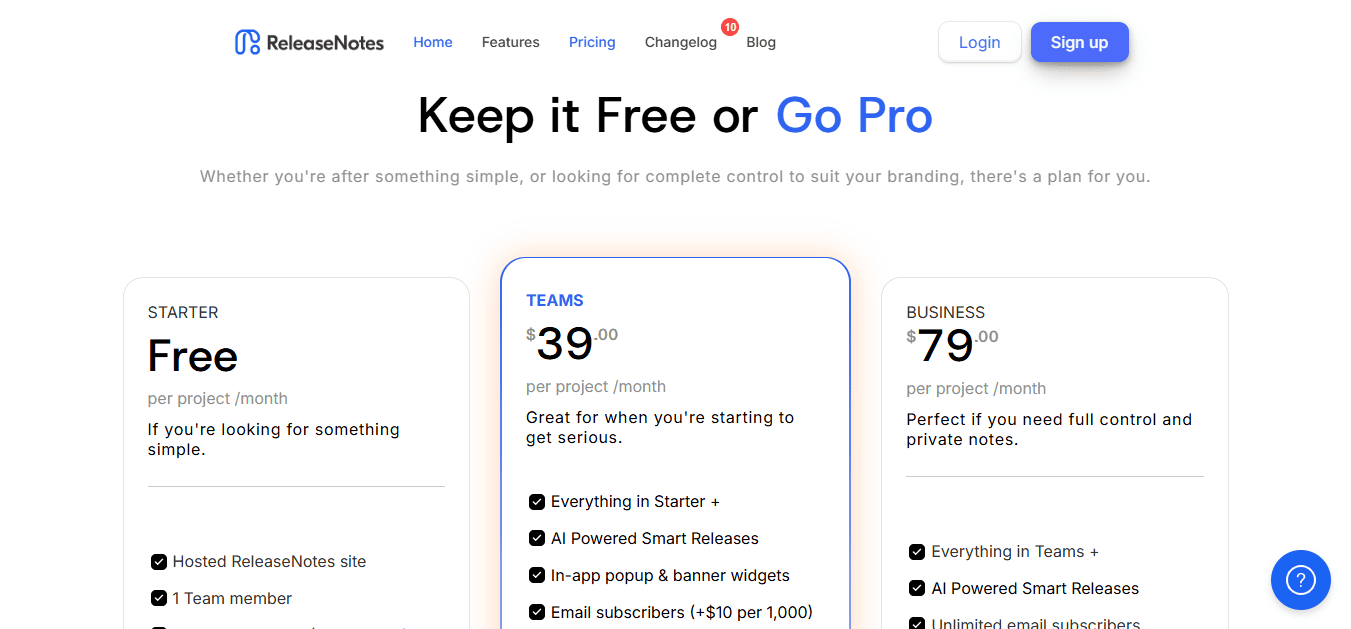
- ReleaseNotes.io does offer a 14-day trial available (this is based on the mid-level tier called “Teams”)
- Free plan available, but its features are somewhat limited; however, this is a great fit for small teams.
- Pricing plans range from $39 to $79 per project per month.
- Discounts offered for annual commitments.
Changelogfy – Best Feature-Rich Release Notes Tool
I always prefer choosing tools that are the best fit for your organization, and sometimes you need a tool that does a bit of everything when you’re a larger organization.
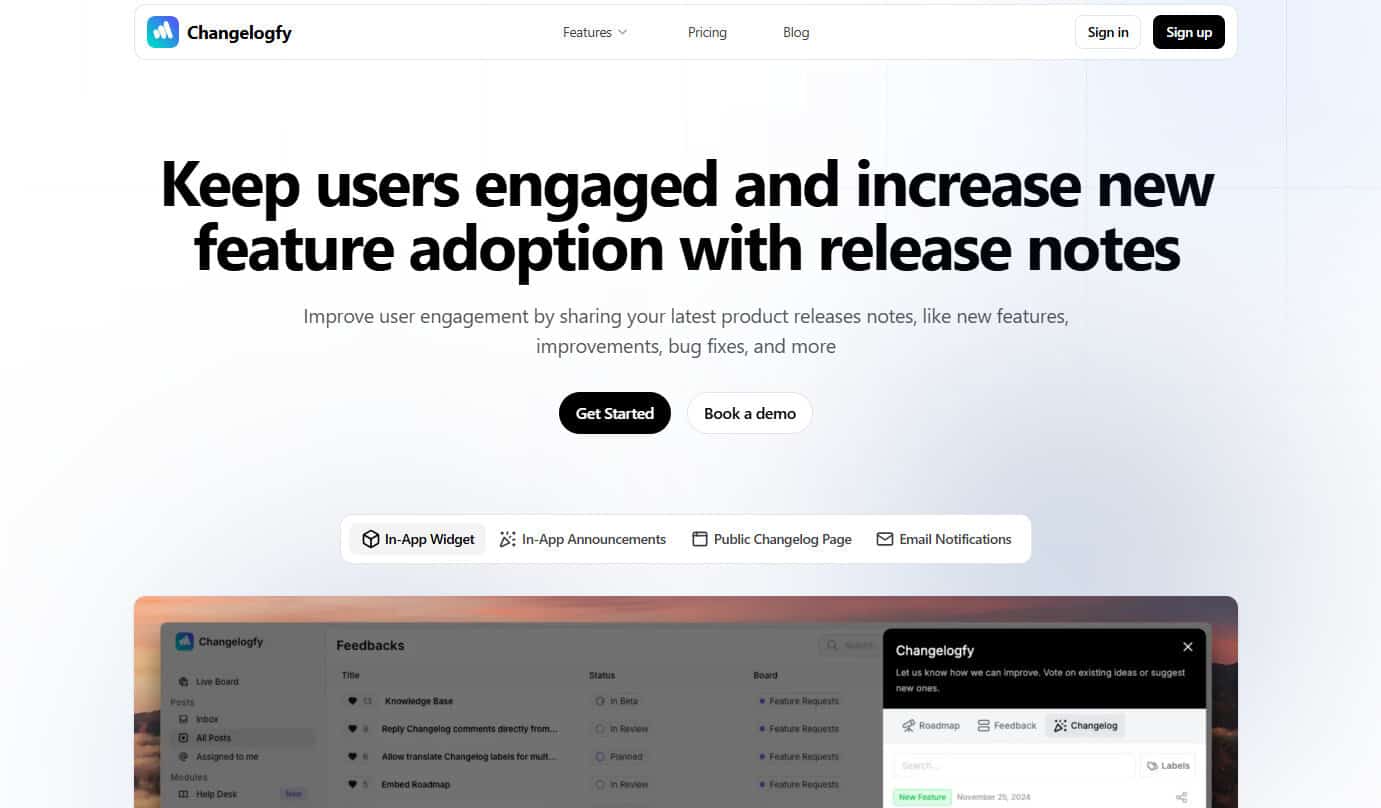
Top Features on Changelogfy
- Sleek, modern user interface and SEO optimised release notes
- Many of the settings are preconfigured, so getting started is relatively easy. This includes features like workflow statuses, widgets, and more.
- I like that you can set up anonymous comments, voting, posting, and more. This gives users a way to submit feedback honestly.
- Multiple features, such as roadmaps, helpdesk, feedback, changelogs, and more, are included on all plans.
- Multilanguage support
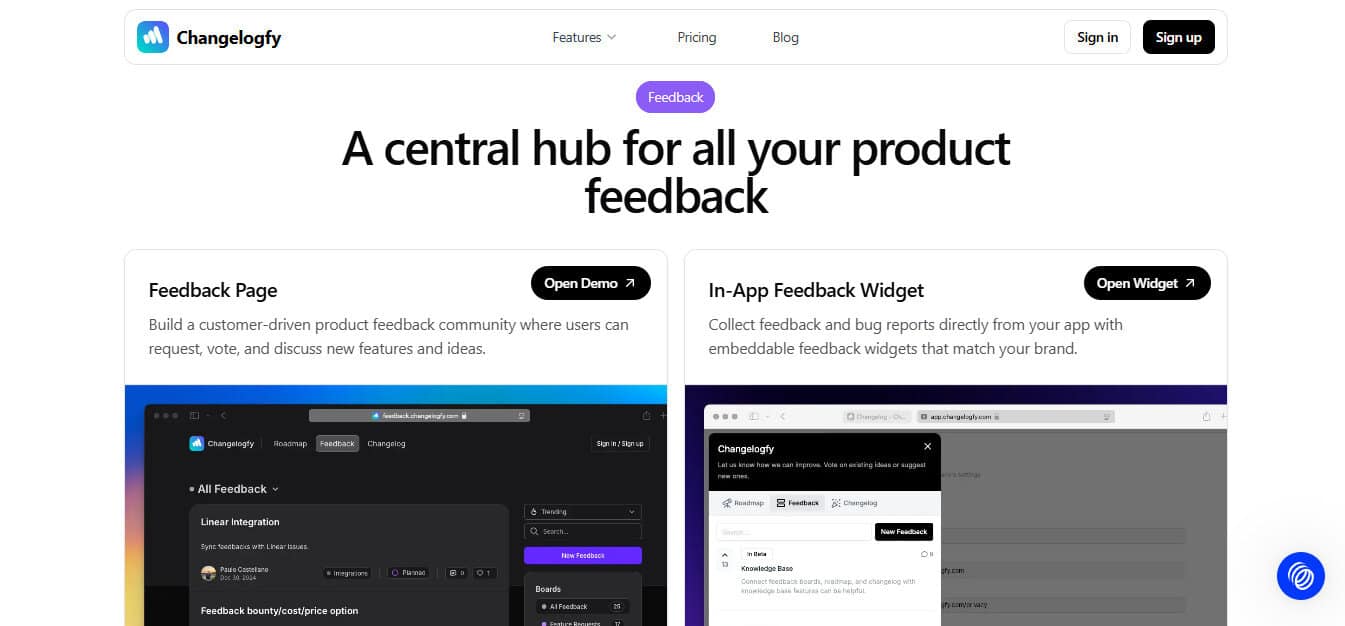
Dislikes and Downsides
- Roadmap features are not as customizable as I’d like to see. The preconfigured roadmap statuses are default only.
- A user guide/new user onboarding would be beneficial for new users.
- Customer support seems to be hit or miss.
Pricing:
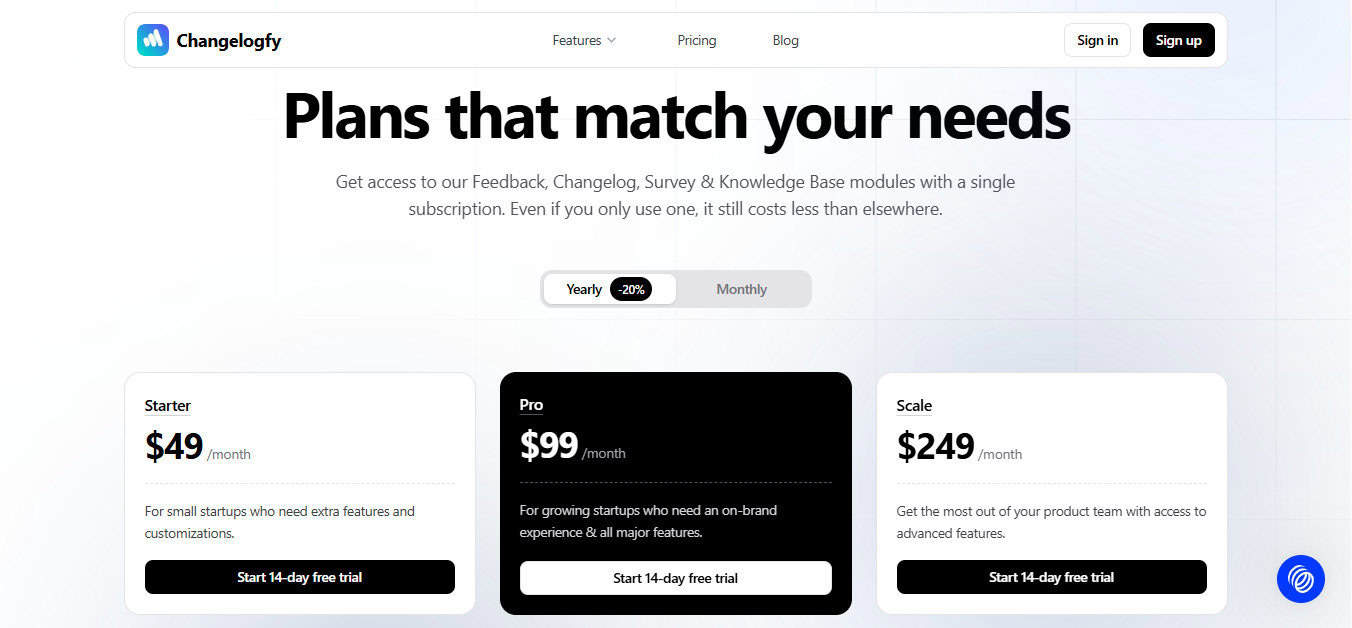
- Free 14-day trial available. No credit card required
- Pricing plans range from $59 to $299 per project per month.
- Discounts offered for annual commitments.
LaunchNotes – Best for Customer-Facing Release Notes
LaunchNotes is a user-friendly tool that’s ideal for teams that need an easy way to publish release notes to specific audiences. With ease of use when it comes to internal and external segmentation, LaunchNotes is seamless and allows you to gather ideas, user feedback, and manage your roadmap all in one place.
Full LaunchNotes review: LaunchNotes Review
Likes:
- Easy to use, with guided onboarding and straightforward setup.
- I like the pre-created templates for a wide range of use-cases, such as updates, releases, bug fixes, and other commonly used notification types.
- User segmentation is easy to manage and set up, and can be customized according to your needs. You can also set up cohorts to ensure that important communications reach the right audience (even if they have not subscribed to updates).
- The product roadmap is easy to use with a drag-and-drop feature. You can also set up notifications for specified users.
- AI-assisted content suggestions for optimised formatting for release notes.
- Users can set up scheduled release notes to be sent to multiple audiences at specified times/dates.
- Idea feedback gathering can be done directly from the roadmap and integrated into the tool so that it can be easily managed in one place.
- Customizable email templates so that your communications look polished and professional
Dislikes:
- Lacking some of the advanced workflow automation features that some other product management tools have.
- Additional customization options would be great
- The starting price can be costly for smaller organizations.
- Less advanced Net Promoter Score options compared to other tools
Pricing:
- Free 14-day trial available. No credit card required
- Pricing starts at $299 per month and includes a wide range of features. There is a custom option for enterprise organizations.
- Discounted rates for annual commitments.
Olvy – Best Free Lightweight Option for Release Notes
Olvy is a great, lightweight tool that makes product announcements easy to set up and publish within a few clicks. For a free tool, it’s got an excellent user interface and is surprisingly intuitive.

Likes:
- Easy user feedback management, including AI-generated summaries
- AI-assisted features within the tool can help you generate your release notes, saving time and helping create user-focused content.
- Multi-language support is a great value-add for organizations that need to communicate with diverse audiences.
- Collect ideas and feedback from users with the functionality to submit feedback or react to the app. You can also use AI to help you filter user feedback based on specific topics.
- Built-in analytics allow you to track key metrics about users and visitors on your page.
- Integrations with Slack, Zendesk, Intercom, Zapier, and more allow you to collect feedback from a wide range of options. You can also integrate your PM tools like Jira and ClickUp and import issues directly into your roadmap.

Dislikes:
- Not as intuitive as other platforms, and it can take some time to learn where to set up specific functionalities.
- The free plan is very limited and means you’ll likely need to pay for an upgrade to get all the more valuable features.
Pricing:
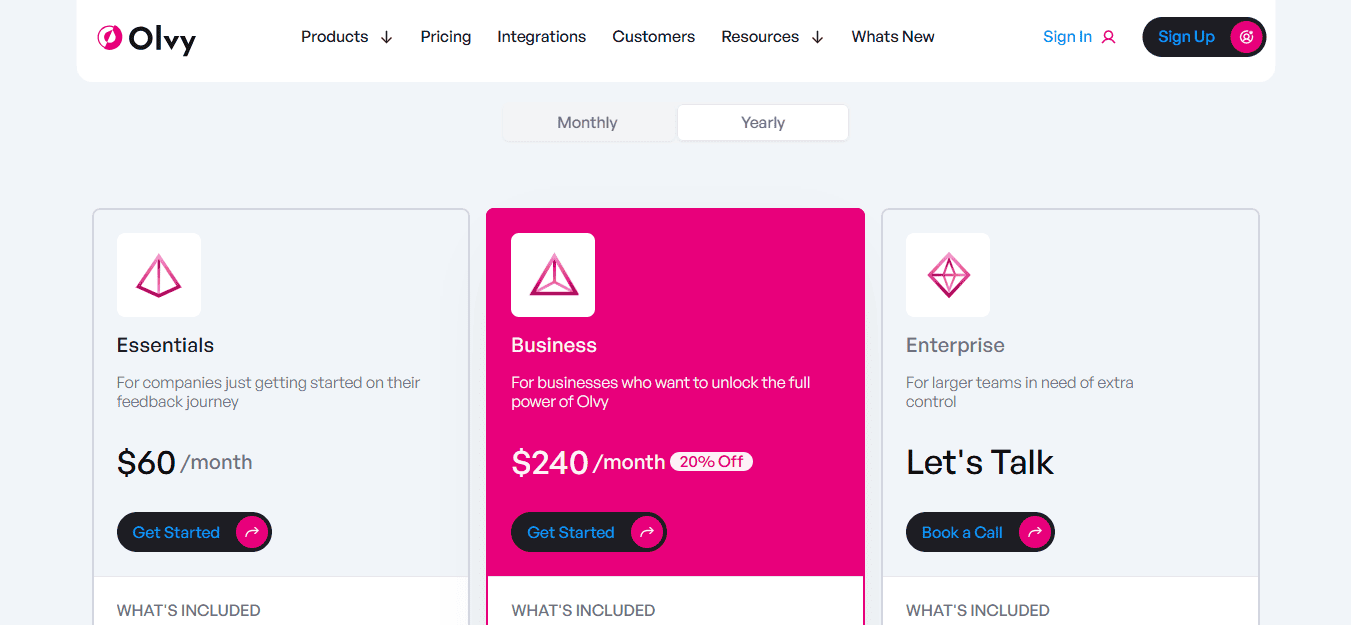
- Various pricing tiers are available for different requirements and have monthly and annual pricing plans.
- The free plan is great for small organizations, but it’s limited to one user only.
- Basic plans start at $60 per month and range up to about $300 per month.
- Olvy offers a custom pricing option available upon request for larger organizations that have more complex requirements.
Before deciding which option is best for you, start with your main feature requirements and what pain points you’re looking to solve. If you need a simple one-click solution to send out internal communications, then rather select a tool that’s lightweight and doesn’t have added features you won’t need. If you’re looking to expand your product management operations and you need advanced roadmap customization options, choose a tool that can grow with your needs.
I always recommend trying out a solution if you can, and many of the suggestions above have free trials available.
The primary purpose of having a release notes tool is to help you achieve transparency and build trust with users of your product, so ensure you use a tool that enables you to deliver this seamlessly.
My Final Recommendations
After reviewing the best release notes tools, two options stand out to me:
Frill: Best choice if your goal is to keep product updates tightly connected to customer feedback. Frill makes it easy to combine announcements, roadmaps, and feedback in one place, so smaller to mid-sized teams can stay agile while listening closely to what users want.
LaunchNotes: Best choice if you need a polished, customer-facing communication hub. LaunchNotes is built for clear, segmented updates with professional templates, AI-assisted content, and roadmap integrations that help larger teams deliver consistent, branded updates at scale.
Both platforms offer free trials, so I’d recommend testing them to see which fits best with your organization’s communication style and growth stage.
LaunchNotes takes the busywork out of product updates. Paste in your notes or tickets and get a structured announcement draft instantly. It’s designed for teams that want to save time, segment updates, and keep communication consistent across every channel.


